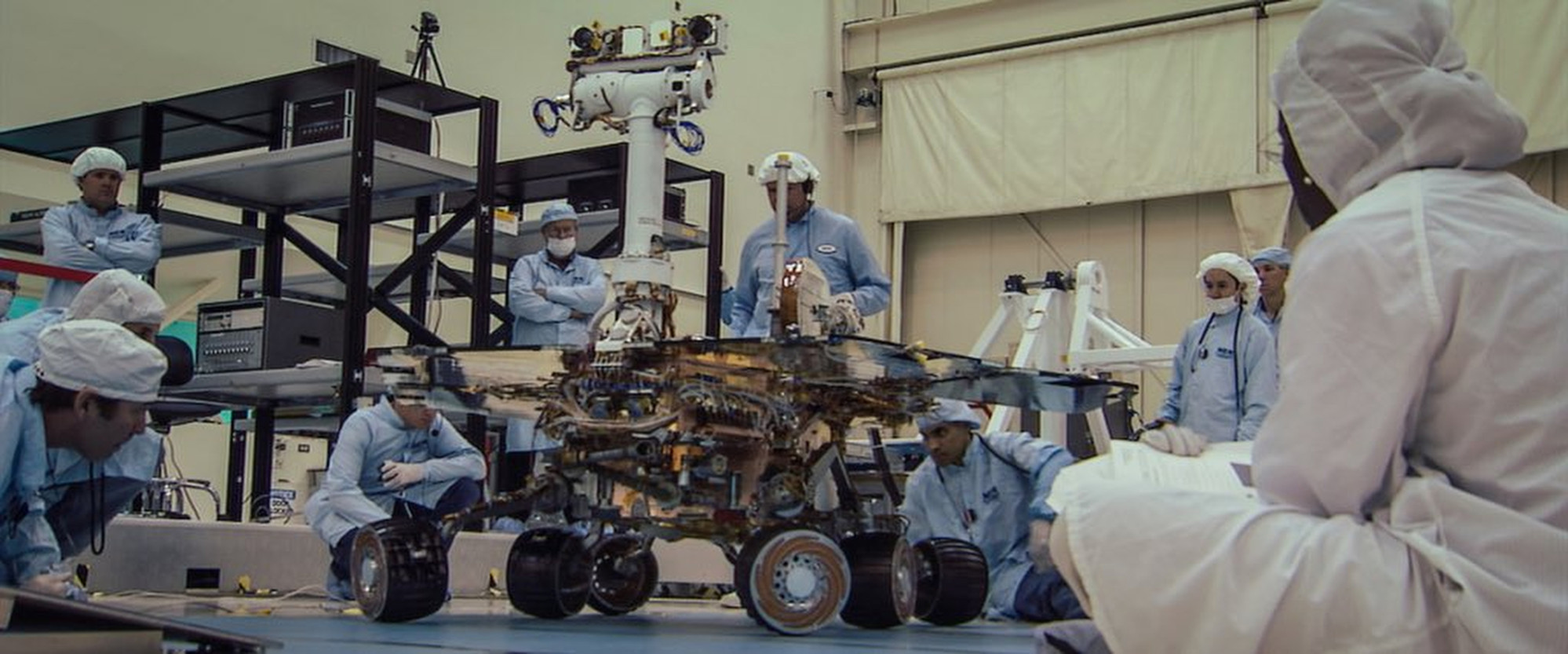
‘WALL-E meets Apollo 13’: why Good Night Oppy documentary about a Nasa Mars rover will bring tears to your eyes
- When Mars rover Opportunity (Oppy) sent the message ‘My battery is low and it’s getting dark’, it grabbed the hearts of Nasa scientists, and filmmakers
- Oppy documentary maker Ryan White was fascinated at people pouring emotions into objects and, with Industrial Light & Magic’s help, gives us a real tear-jerker
Get those tissues ready. You’ll never again see robots as just lurching, whirring, beeping hunks of metal.
In 2003, the United States sent two rovers to explore Mars. The documentary Good Night Oppy (streaming now on Amazon Prime Video) revives that adventure, doing for gangly interstellar probes what the Oscar-winning 2020 documentary My Octopus Teacher did for that tentacled sea creature: humanise them.
The two rovers, Spirit and Opportunity, or Oppy, were built to last roughly 92 days. Spirit lasted six years. And Oppy rambled across 28 miles (45km) of the red planet for nearly 15 years, driving its way into the hearts of Nasa Jet Propulsion Laboratory (JPL) scientists. Think Pixar’s WALL-E meets Apollo 13.
Science documentaries don’t typically tug at the heartstrings. But Good Night Oppy director Ryan White says a 2019 viral tweet from Nasa convinced him and his production team that there was a very different story to tell.

Oppy had run into trouble during a Martian storm, so JPL scientists shut down most of its systems to preserve battery life. But doom loomed. The last message JPL received from its robot was, “My battery is low and it’s getting dark.”
“People who had never heard of this mission suddenly felt they could relate to this little robot who was alone on this planet and in trouble,” says White. “The emotion that human beings can pour into inanimate objects is what fascinated me.”
Happy birthday Bruce Lee: 7 things about the actor that you may not know
How did JPL scientists fall for Oppy? It didn’t hurt that the robot was humanoid in some of its qualities: it stood 5 feet 2 inches (1.57 metres) tall, had two cameras for eyes, an articulating arm and wheels as legs.
“The robots were designed with engineering constraints, mostly: what equipment can we fit into this small package?” says JPL engineering lead Doug Ellison, who was part of the rover project team. “But in the end, you wind up with very human qualities.
“Eyes that see in stereo and with 20/20 vision, like us. There’s an arm with a hammer, that looks like what a human geologist would bring on an expedition.”
Ellison adds that there was always a moment when JPL scientists working the robots remotely from California would start “mimicking their movements, raising their arms the way the robot would, and that’s when you know they’ve moved to another level of connection”.

White was worried that the JPL scientists would “no offence to Doug, be dry and academic and emotionally detached, but these people proved me wrong. The humans I got were the biggest embarrassment of riches.”
Ellison concedes that “it’s strange to form an attachment to a glorified laptop on another planet, but we did have this strange fondness for and nurturing of 400 pounds (180kg) of metal”.
That said, once Oppy died, concluding the mission, Ellison and his JPL team members understood the real attachment.
“In the end, it was maybe like when you turn in that first old car of yours,” he says. “We realised that the bond wasn’t so much to the robot itself, but rather to all these people you bonded with during that experience.”

A big part of the emotional tug created by Good Night Oppy comes thanks to Industrial Light & Magic (ILM), the special-effects company started by George Lucas when he was making his first Star Wars film.
ILM visual effects pros were called in to take real images of Mars provided by Oppy and Spirit and turn them into exceedingly realistic scenes that show Oppy roving around the red planet.
With the hit animated film WALL-E firmly on his mind, White had a directive for the ILM team: “If this is going to look like a cartoon, that’s not worth it. It needs to feel like a human crew was there filming these robots on Mars.”
As a long-time documentary maker used to working quickly, it took patience for White to let ILM work its magic. “But JPL’s motto is ‘Dare Mighty Things,’ so if I’m doing a film about them, I thought, let’s swing for the bleachers.”
Why Selena Gomez couldn’t watch premiere of documentary My Mind and Me
“It was just like what Nasa does. Each team does what they’re best at, and they trust that others will do the same. That worked.”
White felt he might have a hit when in 2020, at the height of the coronavirus pandemic and US presidential elections, he pitched his robot documentary to distributors.
“Docs are important in the way they hold up a mirror to society, but as a result, they’re mostly dark stories,” White says. “But I would do this Zoom presentation (pitching his robot documentary) and often there were tears streaming down the faces of these executives. People are desperate for stories that are hopeful and about the best of humanity.”
That is White’s wish for anyone curious about Good Night Oppy. The film, narrated by Angela Bassett, took the top prize at the 2022 Critics Choice Documentary Awards.
